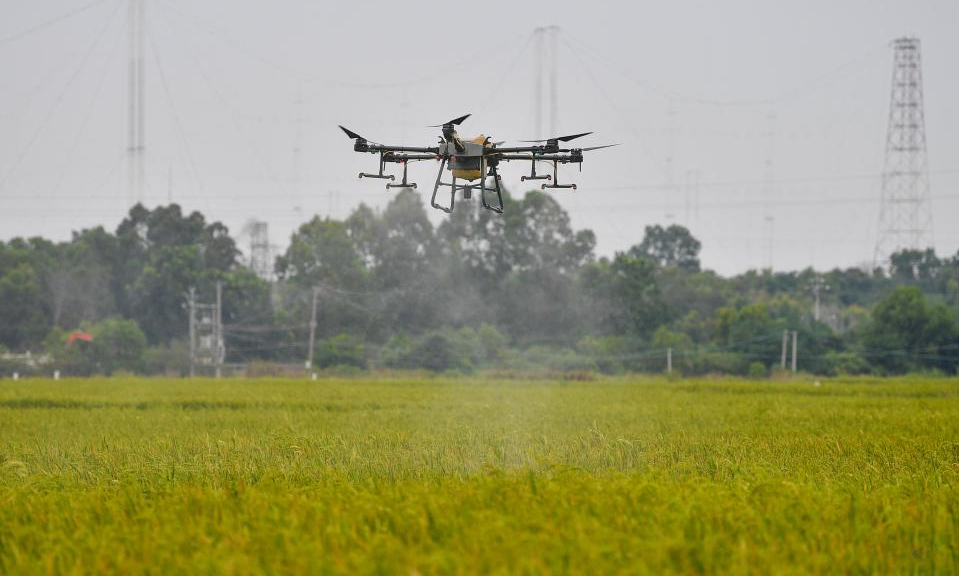TanSat satellite detects, reports human-caused carbon dioxide
BEIJING, Oct. 25 (Xinhua) -- China's carbon dioxide monitoring satellite TanSat has produced its first batch of human-caused carbon dioxide emission (CO2) signatures, offering a scientific basis for the country's efforts to combat global warming.
The space-based monitor detected carbon emissions from human activities based on TanSat's CO2 observations together with nitrogen dioxide (NO2) measurements from the European satellite Copernicus Sentinel-5 Precursor, according to a study published Tuesday in the journal Advances in Atmospheric Sciences.
TanSat, launched in 2016, is China's first global carbon dioxide monitoring satellite, with "Tan" standing for "carbon" in Chinese.
The 620-kg satellite TanSat, sent into a sun-synchronous orbit about 700 kilometers above the earth, is monitoring the CO2 concentration, distribution and flow in the atmosphere. Recently, new algorithms were uploaded onto the TanSat devices, thus greatly improving its measurement precision.
An international team of Chinese and Finnish researchers used TanSat data captured in May 2018 near the northern Chinese city of Tangshan and in March 2018 near Tokyo.
Thereafter they compared the captured data to nitrogen dioxide measurements on the same dates over the same cities, according to the study.
It helps "the detection of anthropogenic plumes and to analyze the CO2-to-NO2 ratio," said the paper's first author Yang Dongxu from the Institute of Atmospheric Physics (IAP) under the Chinese Academy of Sciences.
The ratios in Tangshan and Tokyo were found to align with the emission inventories, "an important step in TanSat data analysis," said Janne Hakkarainen, the paper's co-author.
"The next step is to infer emissions and to prepare for the TanSat-2 constellation including the joint analysis of CO2 and NO2 plumes," said Hakkarainen, who had worked with the Finnish Meteorological Institute.
TANSAT MISSION
TanSat is China's first CO2 monitoring mission to conduct research on the global carbon cycle. The new generation of TanSat mission, TanSat-2, is now in the design phase, said the paper's co-author Liu Yi, an IAP researcher.
TanSat-2 is a constellation of satellites distributed into at least two orbits in the morning and afternoon to cover a city or a point source twice a day.
It is expected to be used to monitor cities with an 800-1000 km wide swath to record the gradient of carbon dioxide from the city's central region to rural areas, and it will use a 500-meter footprint size to improve the emission estimation accuracy, Liu noted.
"Our goal is to use satellite measurements to improve our knowledge of the carbon cycle and to further analyze and constraint the carbon dioxide sources and sinks and their uncertainties," Liu said.
The concentration of CO2 in the atmosphere has increased from 280 ppm to 400 ppm over the past 150 years, leading to an increase in average global temperatures of about 0.7 degrees Celsius over the last century.
The emissions caused by fossil fuel combustion are particularly localized, with urban areas being the dominant contributor responsible for more than 70 percent of global emissions.
Therefore, more carbon satellites are needed to obtain high-precision data on human-caused emissions from cities.
"The results signify China's technical capability in quantitatively detecting and calculating urban carbon emissions, which will help open the market for the carbon satellites," Yang said.
China launched a national carbon market in July 2021, and had seen a cumulative turnover of 195 million tonnes of carbon emission quotas worth nearly 8.6 billion yuan (about 1.2 billion U.S. dollars) by Sept. 14.
The country pledged to peak CO2 emissions by 2030 and achieve carbon neutrality by 2060.
Photos
Related Stories
- China successfully launches new remote sensing satellite
- China launches new environmental satellite
- China sends solar exploration satellite into space
- China launches three new satellites into space
- China successfully launches new remote sensing satellite
- China launches new satellite for environment detection
- Kuwait eyes cooperation with China in space exploration: expert
Copyright © 2022 People's Daily Online. All Rights Reserved.









